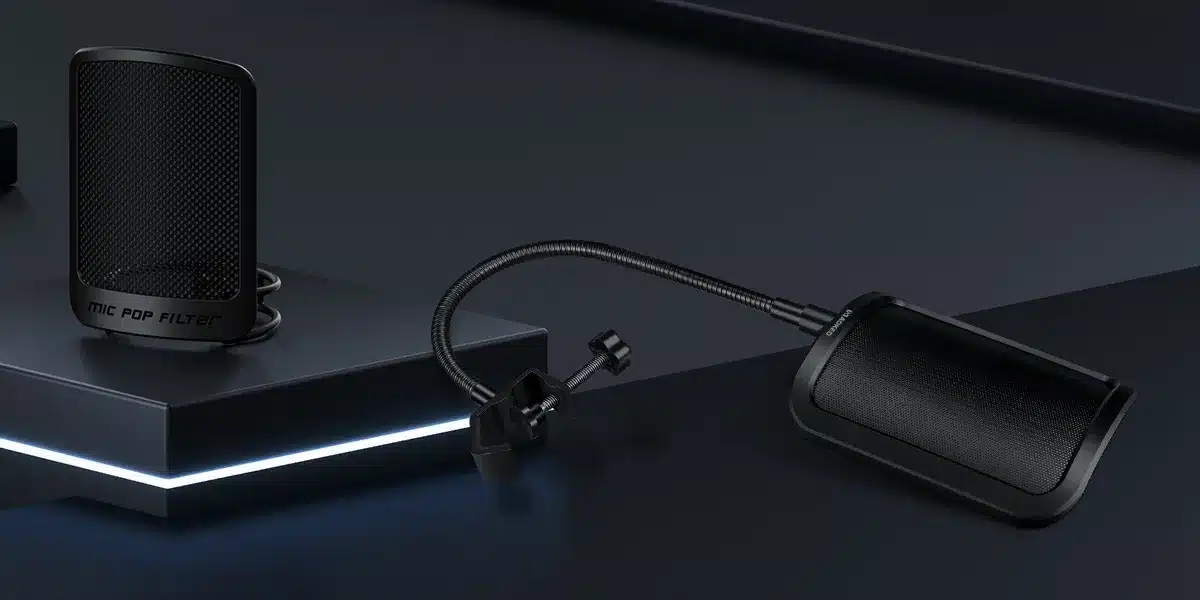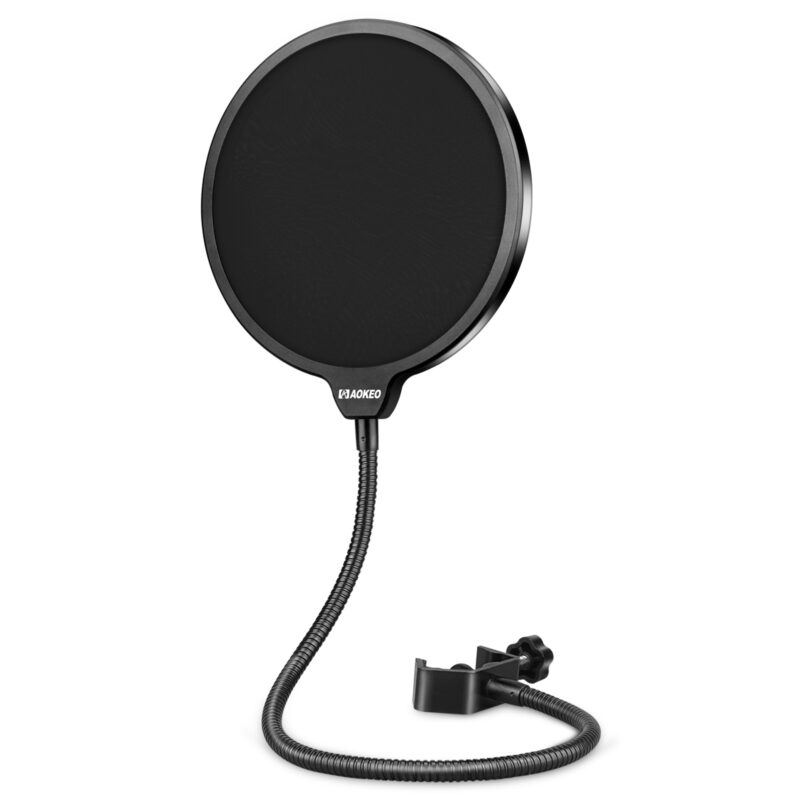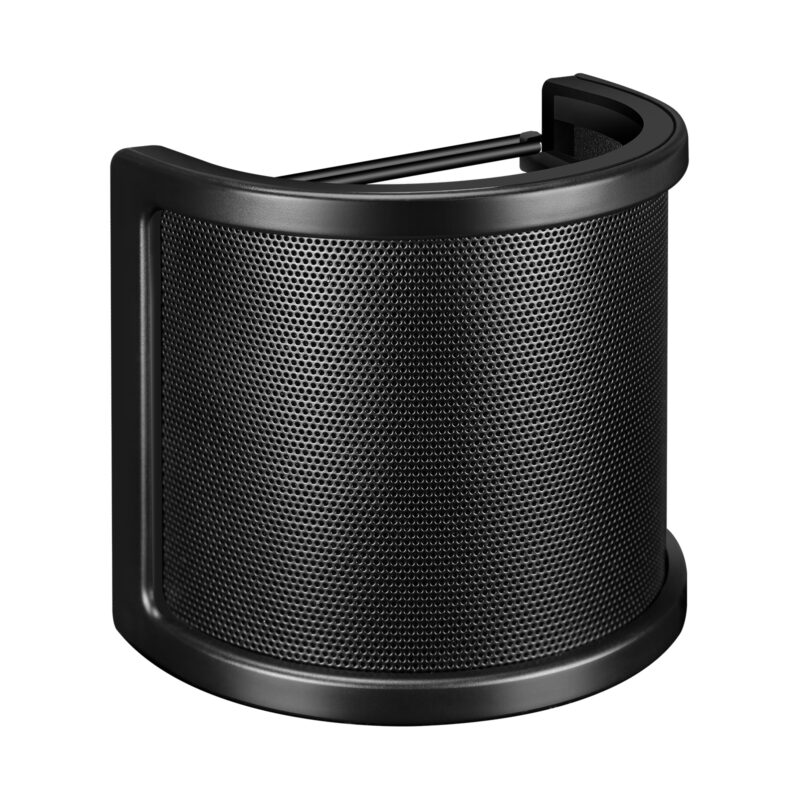Aokeo
Newsletter
Receive access to products and news.
Will be used in accordance with our Privacy Policy
Receive access to products and news.
Will be used in accordance with our Privacy Policy

Aokeo, as a manufacturer with over 10 years of experience in producing and selling microphones and audio tools, we’ve learned exactly what makes a pop filter effective.
In this guide, we’ll share 10 useful tips to help you find the best pop filter to match your mic, budget, and creative needs.
On the mic pop filter market, most options fall into two categories: metal or nylon.
Metal is built for heavy-duty studio use, while nylon shines in casual recordings like podcasts or home setups. Peek at the comparison chart below to compare key features at a glance!
|
Feature |
Metal Pop Filter |
Nylon Pop Filter |
|---|---|---|
|
Durability |
Extremely durable, rust-resistant |
Less durable (mesh may sag over time) |
|
Sound Diffusion |
Crisp, neutral sound; minimal high-frequency loss |
Warmer, slightly softened high frequencies |
|
Weight |
Heavier |
Lightweight |
|
Maintenance |
Easy to wipe clean; no odor retention |
Absorbs moisture; needs frequent washing |
|
Best For |
Professional studios, loud singers, daily use |
Podcasters, streamers, budget setups |

Ensure the pop filter compatibly fits your microphone’s size and shape. For instance:
Blue Yeti users need a filter that aligns with its large diaphragm to prevent plosives and distortion.
Pop filters with a gooseneck and clamp (like Aokeo F-pop models) adapt to various mics, but always ensure you have proper space between the mic and pop filter to optimize positioning.
 Aokeo F-pop
Aokeo F-pop
If your setup includes a microphone boom arm, or you plan to add one, ensure your pop filter can attach stably without wobbling or slippage.
Prioritize models with a sturdy C-shaped clip or universal mounts that fit arms.
Tightly woven metal mesh or dual-layer nylon filters block plosives (like "p" and "b" sounds) while preserving vocal clarity. Opt for 360° rotatable designs to adjust angles mid-performance. (e.g., Aokeo F-Pop)
Choose lightweight pop filters with quick-release clamps for fast setup between guests or segments. Prioritize wide coverage (6+ inches) to stay audible during dynamic movements, and non-reflective surfaces to avoid glare on camera.
For mics near brass/wind instruments (e.g., saxophones), use extra-sturdy filters with reinforced clamps to handle vibrations. A larger surface area (8+ inches) and rust-resistant steel mesh (like Aokeo Pop Filter) protect against moisture and airflow bursts.
Check Amazon’s best-selling pop filters for crowd-trusted quality and real-user feedback.
Best Sellers Rank #1 in Microphone Pop Filters
Brands like Aokeo are not just for durable builds, but also for fast customer support and 30-day hassle-free returns.
Their filters often include 360° gooseneck adjustment, dual-layer mesh filters or easy installation stand for better value. Plus, high-rated Amazon brands update designs yearly based on buyer reviews, which means you can avoid outdated flaws from generic models.
 Aokeo O-Pop
Aokeo O-Pop
Most quality pop filters cost under $15.
They are enough for studio-grade nylon/metal mesh without overpaying for branding. Skip models above $30 unless they bundle extras like shock mounts or adjustable gooseneck arms.
Aokeo U-pop ($9.99) matches pricier brands in durability but cuts costs by avoiding bulky packaging. Remember: Cheap ≠ flimsy. Top-selling pop filters prioritize replaceable mesh layers over “premium” finishes.
 Aokeo U-pop
Aokeo U-pop
A 360° rotatable gooseneck lets you angle the filter perfectly between your mouth and mic, blocking plosives (like "P" sounds) without blocking your view.
Prioritize models with locking knobs to prevent sagging mid-recording. Unlike fixed-arm filters, a reinforced gooseneck bends smoothly for side-address mics and stays rigid even after 100+ adjustments.
Match the design of your pop filter to your microphone and overall audio setup. Consider color, shape, and customization options to ensure visual cohesion. For example:
Look for tool-free setups - clips attachments save time. Avoid filters requiring screws or complex adjustments.
Opt for elastic gooseneck clamps that flex to fit mic stands of varying diameters, ensuring a snug fit without overtightening. Check for lightweight frames (under 200g) that stay secure without weighing down smaller mics. If a product’s instructions exceed three steps, reconsider—simplicity is key for hassle-free daily use.
Check if the filter effectively reduces plosives (like “P” and “B” sounds).
Reviews mentioning “clear vocals,” “no distortion,” or “smooth recordings” are green flags. Look for phrases like “eliminated mouth noises” or “no plosive spikes” to confirm consistent performance across speech styles. Podcasters and voice actors often note if the filter handles sibilance (harsh “S” sounds), a subtle but critical detail for professional results. Avoid filters with complaints like “tinny resonance” or “muffled highs,” which indicate poor material quality or mesh density. For added confidence, watch video reviews to hear raw audio comparisons—real-world tests trump specs alone.
Final Tip: Balance functionality and style! The best pop filter in 2025 should enhance your audio and fit seamlessly into your workflow. Visit Aokeo’s store for filters that tick all these boxes!
No account yet?
Create an AccountGet notified about Aokeo products, news, and events.